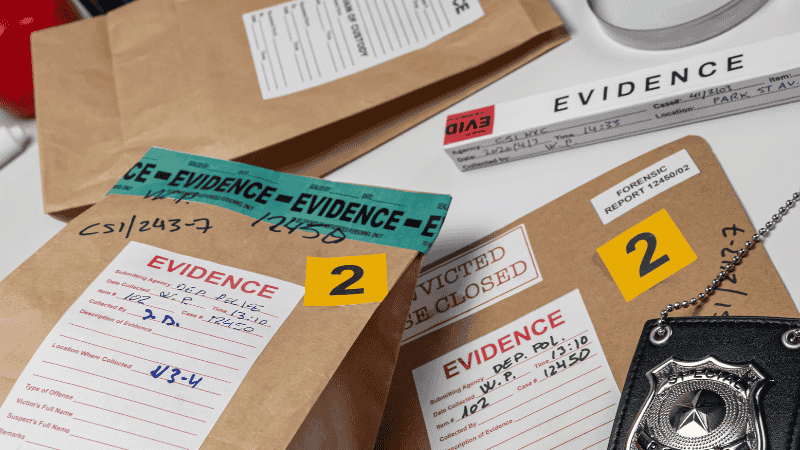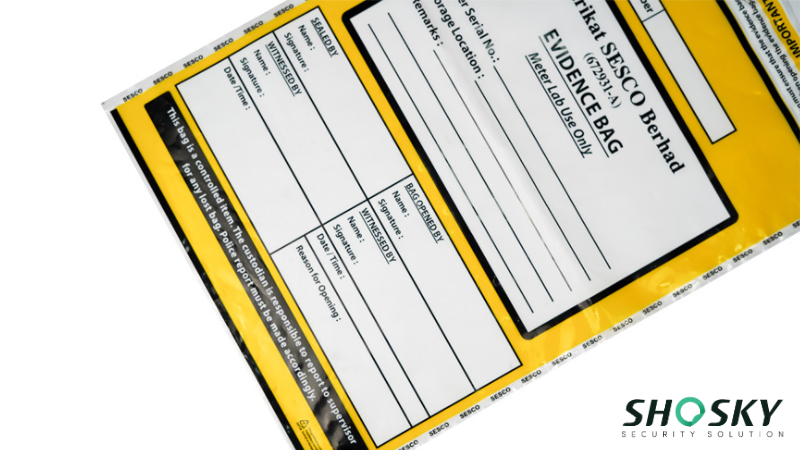Without these bags, even minor damage to the evidence could compromise trials. In addition, evidence bags are available in various sizes, shapes, and qualities, offering investigators a wide range of options to suit different needs.
Now, you may be wondering how tamper-evident bags can be so practical. Let’s examine the types of evidence bags and their features carefully.
What Are Evidence Bags?
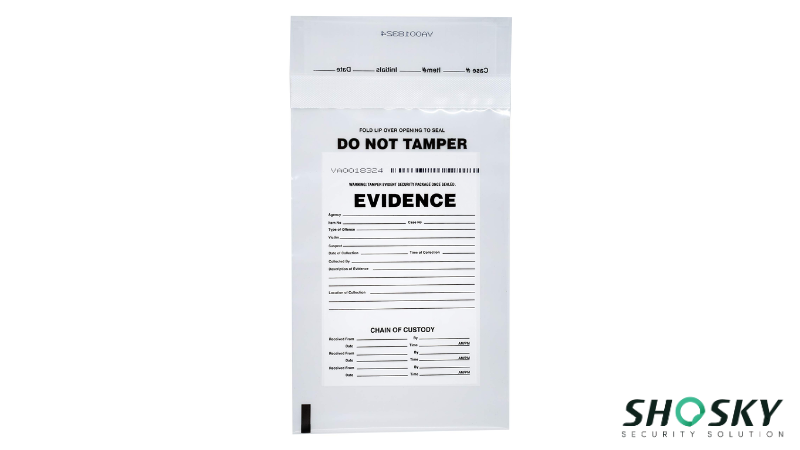
The evidence bags are containers used to keep evidence in policing, investigative, and judicial contexts. The primary use of the evidence bags is to ensure that the evidence is in its pure state. Proper handling of the evidence bags maintains the chain of custody to keep the value of the evidence intact in court.
There are several kinds of evidence bags designated for particular use. The plastic evidence bags are used for non-biological items like tools or documents.
However, paper evidence bags should be used for biological evidence. Paper bags prevent moisture, which can be a concern with plastic bags, so there will be no mold on items inside them.
Tamper-evident bags have an advanced seal that indicates if the bag has been opened before, completely preventing any interference. These bags are ideal for holding currency or digital devices. Heat-sealed bags provide added protection. They are mostly used for preserving narcotics and small, valuable items.
The 5 Main Types of Evidence Bags
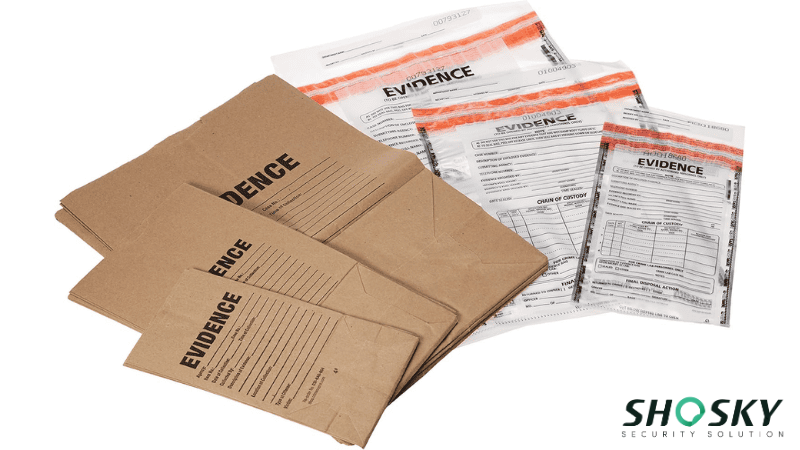
There are many types of evidence bags, and each one has been designed to preserve collected materials and their admissibility in criminal trials. Uncover them!
| Bag Type | Best For | Material | Key Features |
|---|---|---|---|
| Paper Evidence Bag | Biological evidence | Kraft Paper | Breathable, mold-resistant |
| Plastic Evidence Bag | Documents, fibers | Plastic | Transparent, airtight |
| Tamper-Evident Bag | Cash, weapons, samples | Paper or Plastic | Shows tampering, non-resealable |
| Heat-Sealed Bag | Narcotics, high-value items | Plastic | Permanent seal, airtight |
| Custom & Specialized Bag | Bulky/sensitive items | Varies | Barcoded, reinforced |
Whether used in law enforcement, laboratories, or corporate investigations, these tamper-evident evidence bags help maintain the integrity of the evidence from collection to the courtroom. Let’s explore how tamper-evident solutions can be both secure and environmentally responsible in your operations.
1. Paper Evidence Bags (For Biological & DNA Evidence)
Paper evidence bags are the standard choice for storing biological samples such as blood, hair, or fabric with bodily fluids. These materials need airflow to prevent moisture buildup, which could lead to mold or bacterial growth. Paper bags allow air circulation while still keeping contaminants out.
They’re often used at crime scenes to collect items that may hold DNA. Because paper doesn’t trap humidity like plastic, it preserves biological evidence in its original condition for lab testing. Once sealed, the bags should be labeled with all case details and stored in a dry, temperature-controlled area.

Paper bags are also easy to mark, making documentation quick and organized. Their simple but effective design continues to make them an essential tool in forensic and police investigations.
2. Plastic Evidence Bags (For General & Non-Biological Evidence)
Such evidence bags are a practical choice for investigators. Plastic evidence bags are transparent, allowing contents to be inspected without opening and risking contamination.
These bags are mostly used to contain documents, clothing fibres, and fingerprint samples. They come in a resilient, airtight package, and one that cannot easily be torn apart. Some come preloaded in a can-shaped container with a straw closure for easy use, and some have the zip-lock seal, which adds to their protection.
These simple features make plastic bags highly reliable for protecting evidence, especially when working in conditions where damage could easily occur.
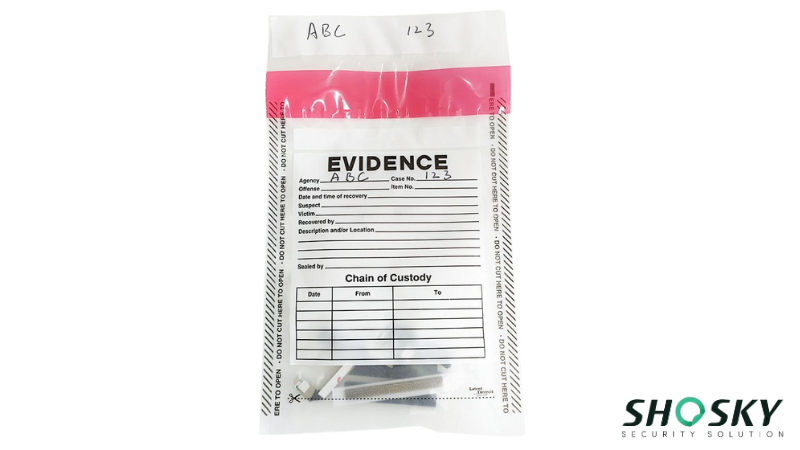
3. Tamper-Evident Evidence Bags
Tamper-evident bags are critical for preserving evidence integrity. They come with a tamper-evident sealing feature that shows clear signs if someone tries to open the bag. Once sealed, any attempt to peel, cut, or tear the closure leaves visible marks, color changes, or “VOID” messages on the surface. This makes it impossible to reseal the bag without detection.
This sealing option can also be added to both paper and plastic evidence bags. For example, a paper bag with a tamper-evident seal is ideal for biological samples, while a plastic version works well for cash, documents, or digital devices. In both cases, the added layer of security helps preserve the chain of custody and strengthens the reliability of the evidence.
Today’s most popular brands of tamper-evident bags have been used to store cash, weapons, and biological samples, as well as resistant materials that allow the bag to be used in rough conditions. They help investigators maintain custody integrity under challenging conditions.
4. Heat-Sealed Bags (For High-Security Items)
Heat-sealed bags are used when evidence requires an extra layer of protection. These bags are sealed with heat to create a permanent closure that cannot be reopened without visible damage. Once sealed, the contents remain completely secured until the bag is cut open for examination.
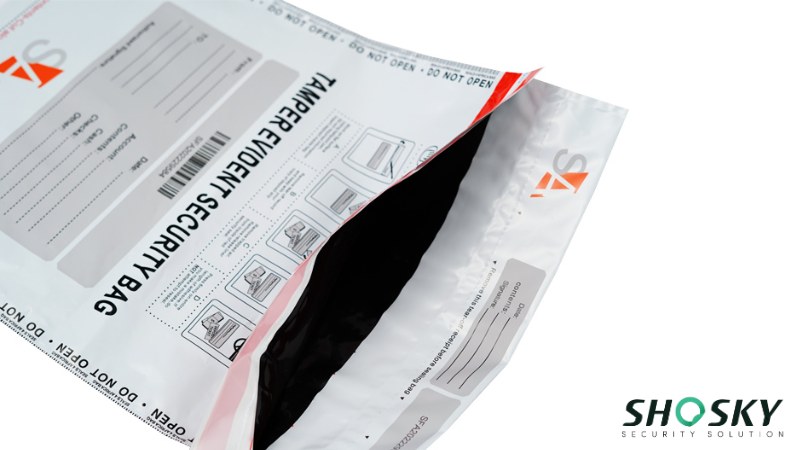
They’re often chosen for narcotics, cash, and other high-value items that demand airtight and tamper-proof storage. The tight seal prevents leaks, odors, and contamination, keeping substances stable during long-term storage or transport.
Many law enforcement agencies prefer heat-sealed bags for drug-related cases since they reduce the risk of loss or interference. Their durability and strong barrier against moisture, air, and external factors make them a trusted option for sensitive or high-risk evidence.
5. Custom & Specialized Evidence Bags
Sometimes, a case needs something more specialized, and that’s where custom evidence bags come in. These bags can be made to fit specific needs, such as adding extra compartments, adding barcode tracking systems, or using heavy-duty materials for bulky or sensitive items.
Some are even designed to handle extreme conditions, like heat or chemicals. Agencies often work closely with manufacturers to create bags that meet their exact requirements. It’s all about making sure the evidence is safe, no matter how complex the investigation gets.
Key Security Features Every Evidence Bag Must Have
Read on to learn about key features to look at when selecting the evidence bag to protect your evidence best.
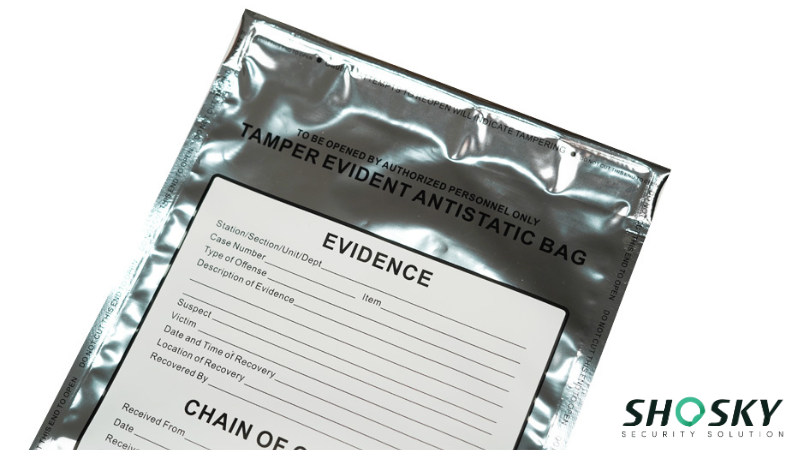
Tamper-Evident Bag Taps
Tamper-evident bag tape is one of the critical tools to ensure the security of the evidence. It gives an indication if a bag has been opened. When tampered with, in one way or another, they change colour.
This design proves very difficult to cover up illegal access. Their use enhances investigation since they provide solid evidence of tampering. These secure seals are essential to law enforcement to keep valuable and sensitive evidence secure.
These seals are widely used across industries, including banking, healthcare, logistics, and law enforcement.
Writable Areas
These specific areas make the documentation less time-consuming. Printed lines allow users to record descriptions of the content, date, and reference number. These sections ease audits and inspections.
By minimising manual mistakes, writable sections save time while making logbook entries. Labels are easy to read and enhance the organisation. It is possible for users to customise Information according to their requirements.
These writable zones ensure clear identification, preventing mismanagement. They are particularly useful in stressful situations where precision is critical.
Sequential Numbering & Barcodes
Sequential numbering adds a layer of accountability. The unique codes mean there will be no “Bag-switching” or unauthorized replacements. Every bag becomes traceable, ensuring transparency.
Sequential numbering prevents theft or misuse of sealed bags. Auditors can match logs with specific bag numbers, creating a reliable tracking system. Sequential numbering also makes inventory control easier.
That is why organizations apply sequential numbering to improve their security measures. It minimizes risks while building trust in processes.
Reinforced Edges
The bags that are designed to have reinforced edges improve durability and reliability. Thin but durable sheets do not tear, puncture, or wear away. These features protect the bag from accidental or deliberate damage.
Stronger edges protect the contents of the bag better during transit. Durability ensures the safe handling of the product, even in harsh conditions.
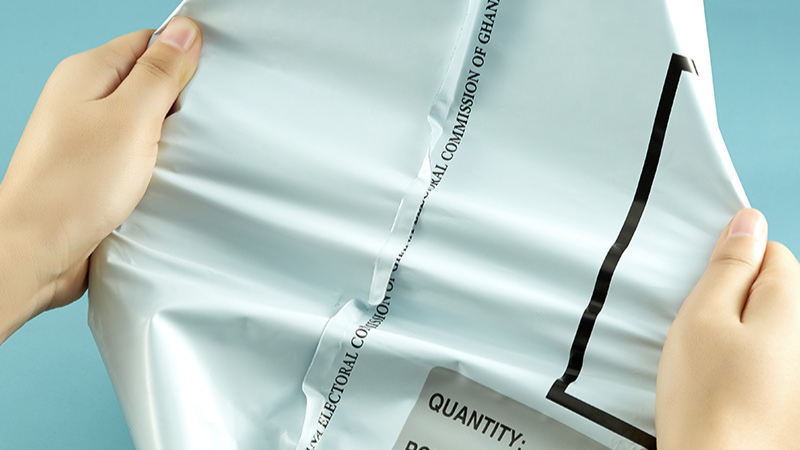
Reinforced designs minimize the possibility of tampering by creating a hard-to-damage exterior. Industries needing high-security packaging prefer these sturdy solutions.
Advanced Security Features
Advanced features take protection to the next level. Tools like security tape visibly highlight tampering attempts. These enhancements make it difficult for malicious actors to conceal interference.
Security tapes add an extra layer of reliability to the bags. Features like holograms, UV markers, or micro-texts further increase protection. These innovations deter criminals and reassure users.
Businesses handling high-value items depend on these advanced tools to ensure safety.
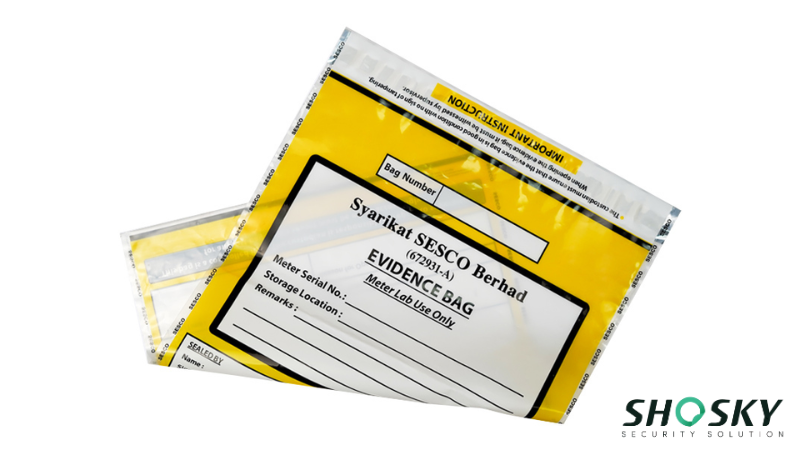
How to Select and Use Evidence Bags: Step-by-Step Best Practices
Selecting the right evidence bag is essential for preserving the integrity of collected materials. The right packaging keeps the line of custody secure and protects the evidence’s legal validity. In the sections below, we’ll go over how to select and how to use evidence bags step by step to maintain accuracy and reliability throughout the handling process.
How to Select the Right Bag?
Choosing the correct bag type is the foundation of reliable evidence handling. Bags differ in design, material, and sealing methods depending on what they protect. Each evidence type requires specific protection against moisture, tampering, or environmental factors. The following are the recommended types of Evidence Bags for Police:
- Biological Evidence (blood, hair, or fabric): Use paper evidence bags that allow airflow and prevent mold formation.
- Digital Evidence (phones, hard drives, or USBs): Use anti-static bags to block electrical discharge and protect circuitry.
- General Evidence (documents, tools, fibers): Use plastic bags for visibility and contamination protection.
- High-Risk Items (cash, narcotics, jewelry): Use tamper-evident or heat-sealable bags for maximum security.
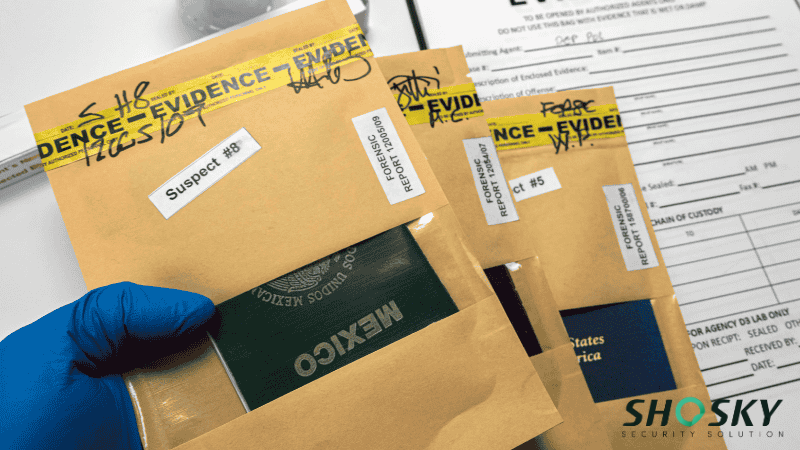
A proper match between evidence type and bag design prevents data loss, damage, or tampering during storage and transport. So, when choosing evidence bags, start by understanding what type of material you’re dealing with.
The bag’s design plays a major role in maintaining integrity as well. Bulky or sharp objects need reinforced seams or shaped pouches to prevent punctures. It’s also important to look for security features such as tamper-evident seals, barcodes, and sequential numbering to maintain tracking and prevent interference.
Usability and durability matter just as much. Evidence bags should be easy to seal, label, and transport without compromising protection. Writable zones and strong adhesives support accurate documentation, while high-quality materials withstand tearing, temperature changes, and humidity during investigations.
When the right bag is selected, it minimizes handling risks and keeps every sample valid, traceable, and ready for examination in court.
How to Package Evidence?
Once the right bag is chosen, correct handling is equally vital. Improper packaging or labeling can break the chain of custody or render the sample inadmissible. Every action—from sealing to storage—must be done methodically to maintain evidence integrity.
Here are the steps for Proper Evidence Packaging:

- Prepare: Wear new, clean gloves before handling each piece of evidence. Change gloves between items to prevent cross-contamination.
- Package: Place the item gently into the chosen bag. Avoid folding, cramming, or overfilling.
- Seal: Use the bag’s designated sealing method—peel-and-seal strip, tamper tape, or heat seal. Once closed, it must not be reopened without leaving visible signs.
- Label: Record all key details such as case number, date, time, collector’s name, badge number, and location. Use the writable area or a preprinted label.
- Store: Keep sealed bags in a controlled, access-restricted storage area. Log each movement or person accessing the evidence.
Each step creates a transparent trail, allowing investigators to prove authenticity and prevent tampering claims.
Evidence bags are the dot connectors in an investigation. They act as shields against external factors that could compromise the integrity of the evidence. Proper packaging ensures collected items remain intact from collection to court presentation. Law enforcement agencies and forensic teams depend on this process to uphold the credibility of their cases.
When sealed, labeled, and logged correctly, evidence bags provide a secure layer of protection that stands up in legal proceedings.
Evidence Collection and Handling Best Practices

The integrity of all criminal proceedings and investigations primarily relies on evidence collection. Every step must decrease the risk of compromised evidence from being admissible in court.
In the 1995 O.J. Simpson case, improper evidence handling led to significant challenges in the trial, highlighting the importance of meticulous protocols in criminal law enforcement proceedings.
Proper use of evidence bags is essential. These special bags keep evidence from being contaminated, e.g., by air, moisture, or fingerprints. For instance, in the successful prosecution of the Golden State Killer case, the securing of DNA evidence for years proved to be fruitful in solving the case.
The true nature of evidence creates the chain of custody. Following these guidelines, law enforcement professionals must handle evidence to prevent mishandling. Misconduct of any kind would lead to evidence being thrown out of the case.
The labeling of evidence provides critical information. Each bag includes a case number, the law enforcement agency, the officer’s name, date, suspect, victim, and crime scene location. Missing information in some cases results in unreliability of evidence.
Secure storage prevents tampering. Monitored, restricted storage areas prevent changes to the evidence. This has proved to be a way of solving cold cases where decades-old evidence has proved to be fruitful using new forensic techniques.

FAQS
Q1: Why shouldn’t biological evidence be packaged in plastic?
Biological evidence cannot be kept in plastic because it absorbs moisture and causes mold to grow. This degrades the evidence and makes it impossible to use for DNA testing.
Q2: How to package Fingerprint evidence?
To package fingerprint evidence, use non-porous surfaces like fingerprint cards or envelopes. Avoid touching the evidence directly; use gloves or tweezers. Secure items in labeled, airtight containers to prevent contamination or smudging and maintain a proper chain of custody.
Q3: What happens if the chain of custody is broken?
The evidence may be ruled inadmissible in court, weakening the case or even leading to its dismissal.
Conclusion
Preserving evidence is the cornerstone of any effective investigation. Reliable storage solutions play a vital role in maintaining the chain of custody, preventing contamination, and ensuring justice. High-caliber evidence bags safeguard crucial items, protecting them from environmental damage and tampering.
By using durable, tamper-evident materials, these bags enhance the credibility of collected proof, fostering trust in investigative outcomes.
Law enforcement agencies must prioritize the quality of their evidence storage to uphold the integrity of their cases. Investing in superior evidence bags today strengthens the foundation of tomorrow’s justice. Choose excellence—your cases deserve nothing less.
Protect What Matters: Invest in Reliable Evidence Bags From Shosky
Searching for tamper-proof evidence bags in bulk? Shosky has you and law enforcement professionals covered! For police officers and legal professionals, our bags are long-lasting and reliable. Reach out to us today to learn about how we can meet your needs and make sure that all evidence is preserved.
